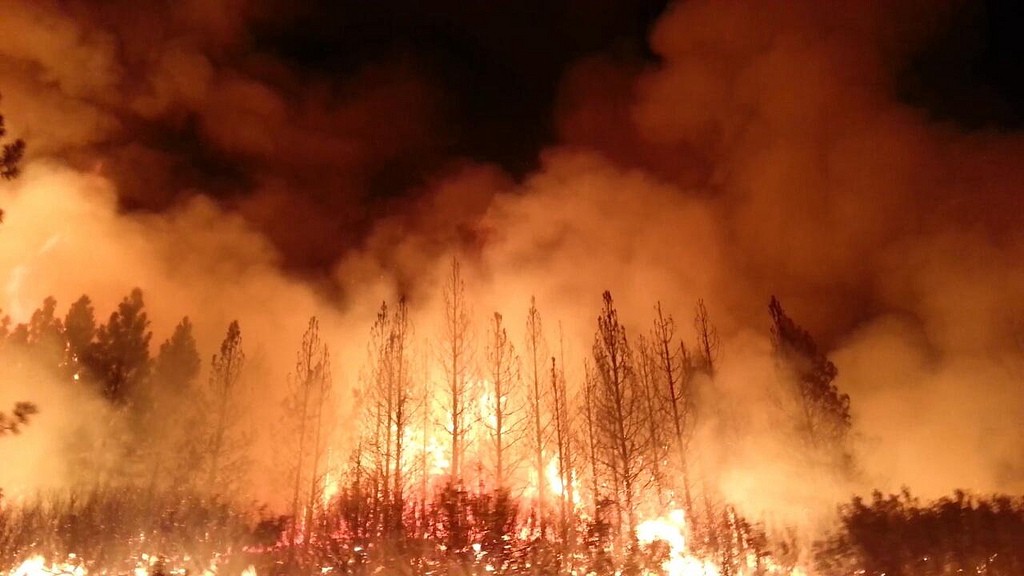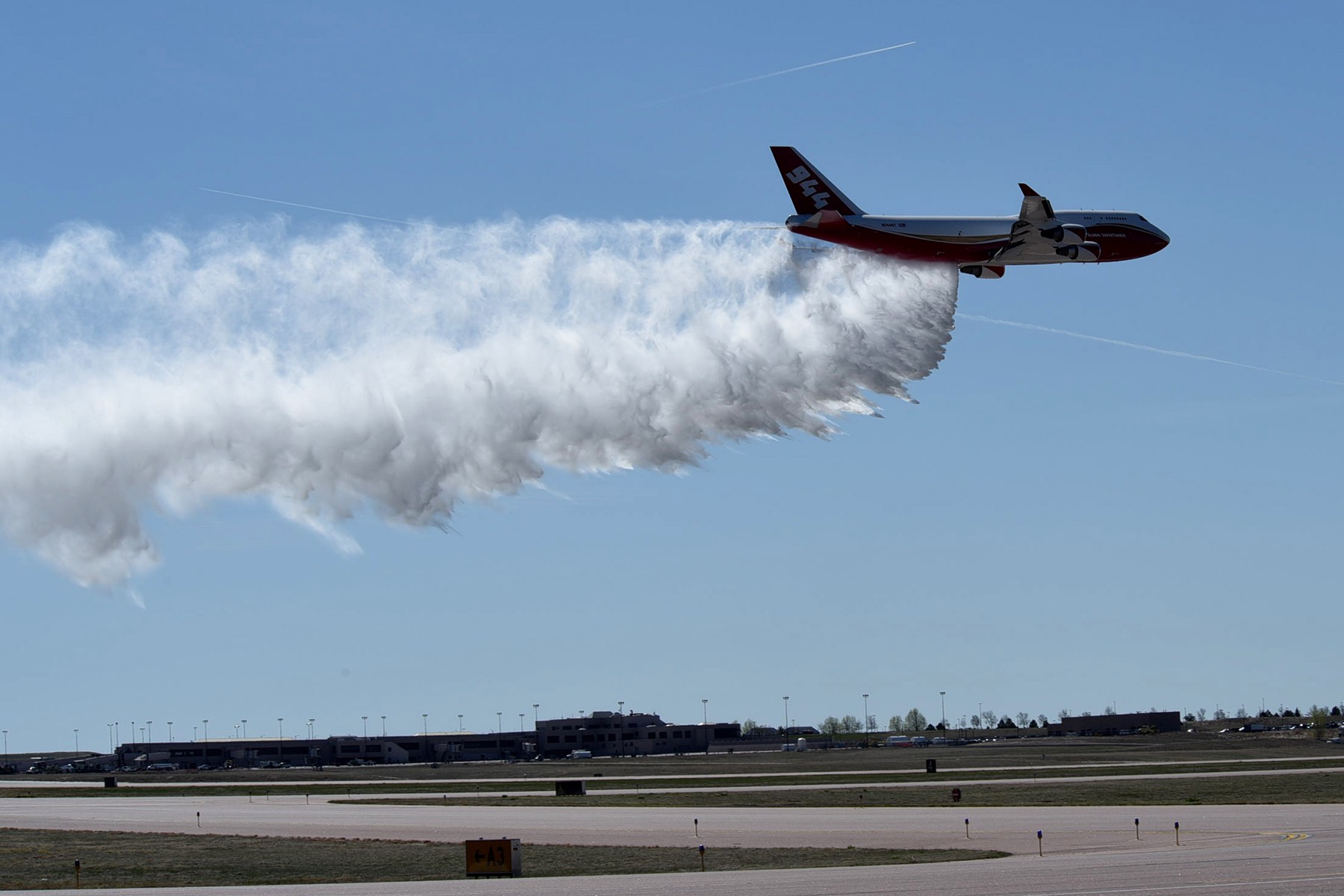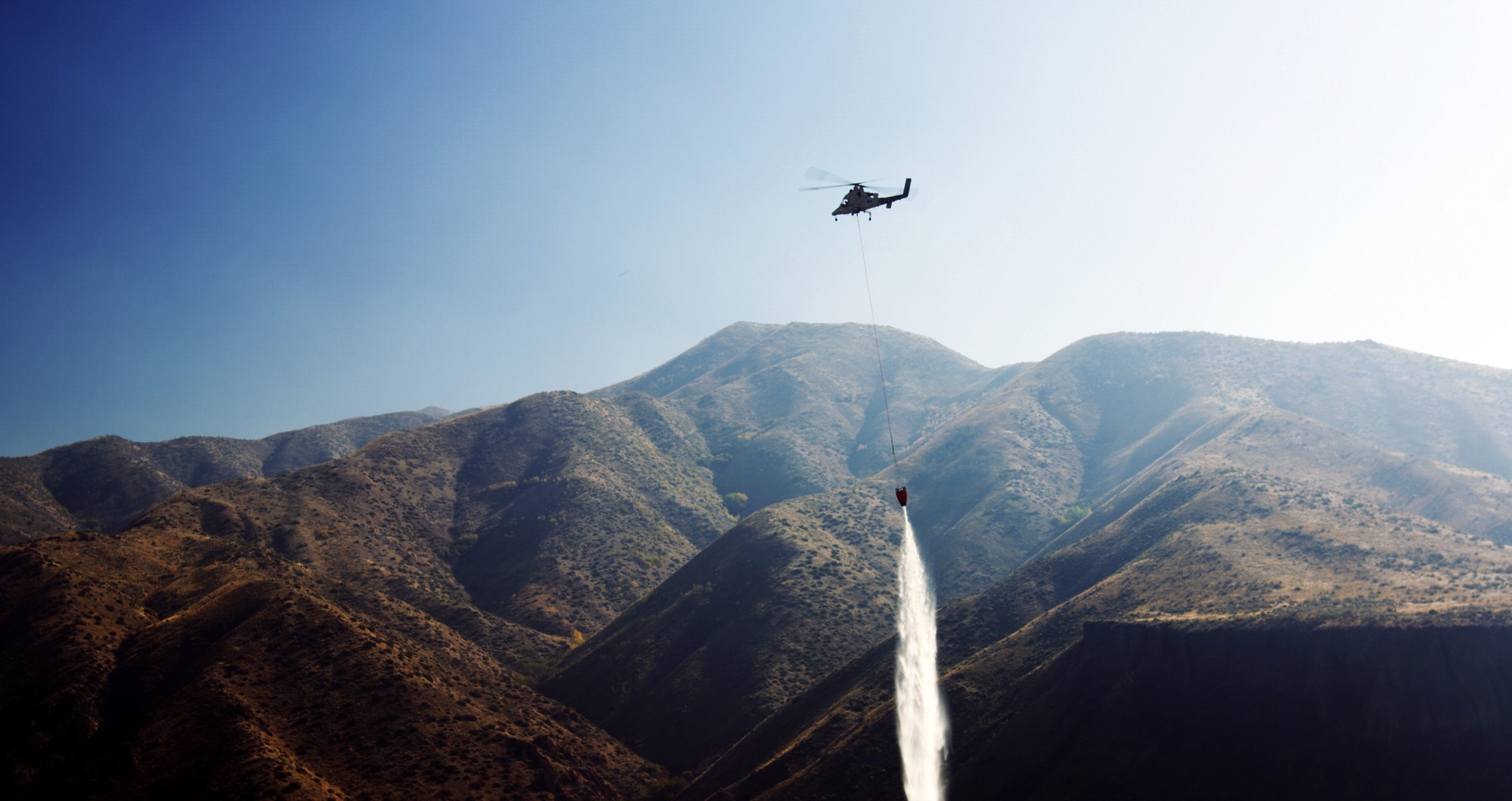It’s just after 9:30pm on a smokey Tuesday night. The latest wildfire has been raging for two straight days now. Even during the day, conditions were starting to challenge the limits of crew and aircraft to help those on the ground contain it. The agency’s new fire surveillance drone, CalFire 2 is autonomously patrolling high risk areas, using its sensors and AI to look for new problem areas.
“CalFire 2 just detected another hot spot Mam, just 5 miles south of Team Bravo’s position.” Watch Commander Shipley said to his boss.

“Alright, set CalFire 2 to loiter there so we can monitor the situation, send out a HasBee swarm, and radio Team Bravo to let them know their situation is potentially changing.”
The firefighters had a bit of a sense of humor about their new tools. Their autonomous firefighting swarm aircraft, the CF-31, earned the nickname HasBee as a sort of homage … Hasbro is a company known for creating the “Super Soaker” series of water guns.
“We’ve got a potential situation developing just about 5 miles to your south. We’ve deployed the HasBee’s but we’re going to keep an eye on it for you from here.” He said while consulting a recent map collected and stitched together from CalFire 2’s surveillance just 10 minutes ago.

“I’m showing HasBee’s 1,3,4 and 5 all about to depart. Two is en route back to the airport so it can resupply from the previous mission.”
At an airport just 10 minutes away from the fire as the crow flies, four Cessna sized helicopters light up the tarmac as they come to life. Two red lights on either side of the windowless aircraft alternate blinking in unison, casting odd-colored shadows on the bright orange aircraft.
They looked as though someone had covered a helicopter in life preservers. They didn’t have any rivets, or windows, or hard lines — just smooth bright orange curves periodically illuminated by the blinking red lights in the front of the craft.
Suddenly, all at once, the aircraft start wailing a siren sound in unison. In crewed aviation, it was customary to yell “Clear” to let people know the engine is starting, but the HasBee designers wanted something that worked across different languages. The uniform sirens all finished at once and like clockwork, the slow spooling sound of turbine engines started to whine.
Their rotor blades began to turn and one by one they all lifted into a hover. They did a small dance as they checked critical control functions, wagging their tail slightly, dipping side to side, fore and aft. Their red alternating lights both turned solid green.
“We’re ready to go on the first four HasBees mam. I’m sending them now, ETA 10 minutes.” Shipley said as hit the big green “DEPLOY” button on his tablet.
11 minutes later Watch Commander Shipley watched as they positioned themselves and used their algorithms to work together to put out the hotspot collaboratively. He keyed the microphone again. “Flynn, this is Incident Command. We’re confirming the hotspot out. ’ll update you if anything changes. We’ve got CalFire2 doing periodic checks on it.”
Sound like science fiction? Maybe not as much as you think.
The troubling events in Northern California the last few weeks have been heartbreaking to watch. Each morning, smoke obscured the San Francisco skyline as a reminder of the devastation just to the north of here.
When it comes to fighting wildfires, firefighters have largely remained true to a proven process that they’ve used for decades now. The Northern California wildfires have been a sobering reminder that sometimes different circumstances require different tactics. For example, the 747 Super Tanker currently being employed with great success was quite literally grounded by the US Government until last week.
Drones and Aerial Firefighting — Bitter Enemies?
While it’s true that today drones and aerial fire fighting response are wholly incompatible, it doesn’t have to be this way going forward. It might surprise you how close a robotic fire fighting future is and how much it could help people get the upper hand against this firey foe. How will drones do this?
First, crewed aerial fire fighting is typically avoided at night. The US Forest Service had banned the practice since the 1970’s because of its risk to crew and it’s cost. However, only fighting fire for half the day from the air creates a daunting task to finally get it out. The Forest Service has been reintroducing nighttime operations since a bout of bad fires in 2013, but by and large, nighttime operations remain a challenge for both crews and budgets.
Drones have the advantage of being able to operate in the dark, and in challenging conditions. As AI improves, they’ll get better at spotting fires, and then addressing them as soon as possible. It’s not implausible that the first responders to a wildfire may not be people at all, but drones. Getting people on the ground at the right place and in short order is a logistical challenge that can boggle even the brightest operational minds.
While today, we don’t have a National Airspace System (NAS) that can accommodate ad-hoc autonomous flights of several thousand pound aircraft, it’s most certainly coming. The advantage for situations like wildfires is that they inherently mean that other air traffic, including hobbyist drones, commercial flights and even airlines, are banned from using it. Wildfires are a good platform to start to introduce technology like this into the NAS — to the benefit of everyone.
One missing piece is the specialized hardware, but that too is coming. Aerial firefighting is very much a commercial business. In fact, the United States spent $2B in 2015 on fighting wildfires. Unfortunately, it looks like that number might be much higher this year. As such, private industry is addressing the need for bigger, smaller, and better solutions. Whether it’s converting a Boeing 747 to be a tanker or developing small autonomous fire fighting solutions, innovation is happening. A particularly good example of private industry addressing this need is Lockheed’s K-MAX Unmanned Autonomous System. They’re being used in production right now in Australia and are probably not too far from being using in the United States if fire seasons like this keep happening.

The K-MAX is so easy to operate that during a recent demonstration they had a 13 year old from the audience commanding it. And we’re still in the early days of this technology. If the rapid developments in consumer drones are any indication, we could be looking at radically different platforms just a few years from now.
Obviously, with the need being dire and the tech being actively developed today, the only thing missing is the regulatory environment to enable this unbelievably powerful asset to be used. The FAA continues to move forward with a plan to bring autonomous aircraft into the National Airspace and if the situation continues to worsen as it has this year, it’s not implausible they’ll get the additional resources they need to make autonomous firefighting regulation a reality sooner rather than later.
The future of firefighting and drones holds a lot of promise. Though today drones are often cited as putting people into perilous situations, drones will one day be used to save lives, homes, and precious natural resources. Keep looking up, you just might be surprised by what you see in the future.
Joshua Ziering
Joshua is the Founder and Chief Security Officer of Aloft (formerly Kittyhawk), the market leader in drone airspace systems & UTM technologies. He is also a Part 61 certificated private pilot, a founding member of the FAA's Drone Safety Team, and an FAA Part 107 certificate holder.



